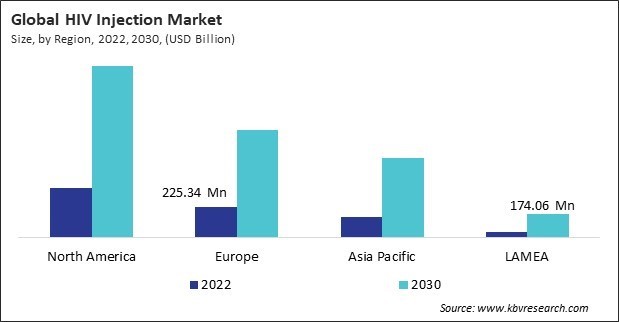According to a new report, published by KBV research, The Global HIV Injection Market size is expected to reach $2.8 billion by 2030, rising at a market growth of 17.6% CAGR during the forecast period.
Many organizations are coming together to support the HIV communities and raise awareness. As an illustration, the Joint United Nations Programme on HIV/AIDS (UNAIDS) is a frontrunner in the international race to eradicate the AIDS pandemic as a threat to public health by 2030. This initiative is in line with the Sustainable Development Goals. UNAIDS facilitates the collaboration of United Nations agencies, the public & private sector, civil society, and individuals impacted by HIV in order to mobilize resources, advocate for increased political dedication, and offer strategic leadership and assistance to nations across the globe.

In communities living with and affected by HIV, networks of people from key populations and youth leaders have been, and continue to be, essential for progress in the HIV response. They provide essential prevention, testing, and treatment support services, build trust, generate innovative solutions, promote health, monitor policies and program implementation, and hold providers accountable. One such example is a UNAIDS-supported initiative by the International Community of Women Living with HIV Asia and Pacific (ICWAP) that supports positive women’s organizing.
The development of combination therapies that combine multiple antiretroviral drugs into a single injection is also gaining attraction. These combination therapies can simplify treatment regimens and reduce the number of injections patients need, improving adherence and convenience. Advancements in drug delivery technology have also contributed to the growth of the HIV injection market. New delivery systems, such as micro-needles and auto-injectors, have made it easier and more convenient for patients to receive injectable treatments, reducing the need for frequent visits to healthcare providers.
The Drugs Stores & Retail Pharmacies segment is experiencing a CAGR of 17.8% during (2023 - 2030). The convenience, accessibility, and additional services offered by drug stores and retail pharmacies can propel the purchase of HIV injections from these establishments. Drug stores and retail pharmacies are often conveniently located in communities, making it easier for patients to access their medications. This convenience can be especially important for patients with busy schedules or limited mobility. The availability of insurance plans at numerous drug stores and retail pharmacies facilitates patients' ability to afford their medications.
Full Report: https://www.kbvresearch.com/hiv-injection-market/
The North America region dominated the Global HIV Injection Market by Region in 2022, and would continue to be a dominant market till 2030; thereby, achieving a market value of $1.3 Billion by 2030. The Europe region is anticipated to grow at a CAGR of 17.4% during (2023 - 2030). Additionally, The Asia Pacific region would witness a CAGR of 18.7% during (2023 - 2030).
By Distribution Channel
By Geography
 Unique Offerings
Unique Offerings